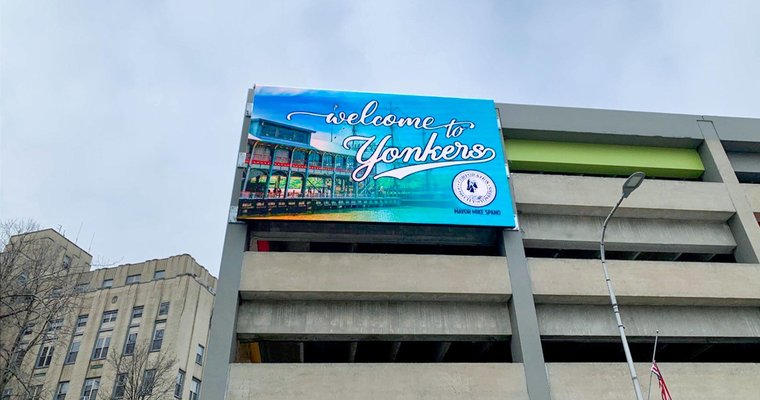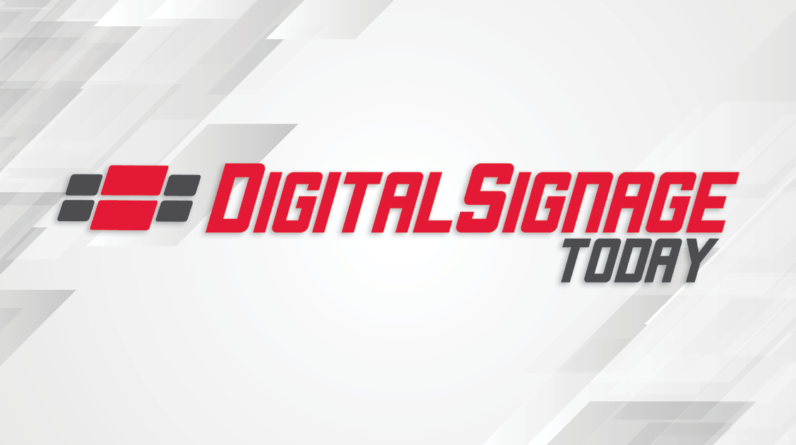
[ad_1]
There are many parts of the permitting process when it comes to digital signage. In order to get the desired LED display up and running, it’s best to let the sign professional take care of this.
 |
Kevin McCord is the owner of Signarama in Lawrenceburg, Indiana and Florence, Kentucky, along with two Yesco locations in Cincinnati and Dayton, Ohio. Image: Kevin McCord/Signarama. |
Banks, car dealerships, hotels, hospitals, schools, and retail centers are perfect hosts for digital signage. Since most sign shops already count these markets as their clientele, it should come as no surprise that many are also offering LED display and Electronic Message Center solutions to these customers—mostly through design and/or installation.
However, it’s important to verify that the digital sign requested by a client will be allowed on the property where it will be installed. This means securing the necessary permits while also navigating through any possible regulatory and ordinance challenges.
The sign shop should always be in charge of handling the permit process on any digital signage project. From my observations, most end-user clients wouldn’t know where to even begin. They’ve never had experience with the types of permits, allowances, drawing types, proper steps, etc.
The inability to secure a permit for a digital sign can result in project delays, removal requests, or fines.
Summary
Here are seven tips to help you with the process (each are discussed in depth below).
- Know the different types of necessary permits.
- Designing a digital sign for use at its location.
- Safety standards or certifications depend on the municipality.
- Content regulations depend on the municipality and the property owner.
- Consider elements associated with the digital sign structure.
- On-property obstacles can arise during the installation process.
- Use our three essential steps to ensure installation of an on-property digital sign.
Tip 1: Know the different types of necessary permits
My Signarama store is located in Lawrenceburg, Indiana, and boasts thirty-five years of experience serving southeastern Indiana, Kentucky, and Ohio. We’re actively involved with digital signage and are veterans of the permitting process.
The permitting requirements for LED digital signage installations involve Zoning, Building, and Electrical. When it comes to Electrical, if we’re just going to be hooking the new display into an already-existing electrical, an inspection may be all that’s required. It really depends on the municipality’s guidelines.
Our local municipality is Dearborn County, which includes the City of Aurora’s historic district. In addition to Zoning and Building permits, they also require a Certificate of Appropriateness. This means that the historic preservation commission must approve that the digital sign will be compatible with their preservation ordinance before we can proceed further.
Keep in mind that a municipality may require, as a part of this approval process, a Special Use permit or Variance for a digital sign. This may necessitate a pre-meeting with officials, as well as having to answer a large packet of multiple questions regarding the effects of the requested digital sign on and within the community. The Variance might also specify mailing documents to all the surrounding businesses and allowing them the chance to approve or disapprove of the proposed digital signage.
Realize that municipalities aren’t going to give any real updates about sign ordinances and allowances on their own. It’s important to call them to find out about any changes.
We always make sure our customer is aware upfront about all the allowances for the type of digital signage they’re requesting us to put up. Just because they may see a digital sign used in one part of the country doesn’t necessarily mean they can use it at their location.
Tip 2: Designing a digital sign for use at its location
Before starting the design process on our end, we first research the property where the digital sign will be installed and contact all municipalities associated with this address. My shop collects all the municipality allowance information upfront (the type of digital sign allowed, the size ordinance, its location on the property, etc.) to ensure the solution we’re proposing to our client will be approved.
Our design team then creates a site plan with drawings. These drawings show the property owner’s information, the digital sign’s location and size, mounting/installation details, electrical details, tenant space/building width, and lot frontage.
One of the trends I’ve noticed in our area has been municipalities now requiring engineered stamp drawings with details all the way down to the snow load requirements. These haven’t really cropped up as a standard requirement until the last year or two.
We first apply with the Zoning department, which is usually the township, city, or county. Next we apply with the Building department. Keep in mind this department could be in a different municipality than Zoning.
Tip 3: Safety standards or certifications depend on the municipality
Typical examples of safety standards or certifications include a sign erector license, an electrical license, or a crane certification. On-site safety training could also be required before installing a digital sign.
Ensuring that we, as a contractor, obtain any required business or sign erector licenses within the municipality we are applying will help us avoid any delays in acquiring the necessary permits.
Tip 4: Content regulations depend on the municipality and the property owner
When it comes to electronic message centers, restrictions can be placed on screen brightness, colors, message duration, flashing, and the number of slides allowed to be displayed on the unit per day, hour, minute, etc. This can include advertising and cultural insensitivities.
The municipality will typically lay these requirements and rules out to us during our discussion of allowances, then we’ll relay this information back to our client.
In addition to displayed content, the landlord can also pose restrictions on the type of digital sign a tenant can have. We always make sure they are involved in the process early on.
Tip 5: Consider elements associated with the digital sign structure
In addition to the digital screen, elements attached to the structure also need to be addressed during the permit process.
For example, one rule in our area governs that any illuminated sign should employ only light that emits illumination of constant intensity. It goes on to state that a sign cannot contain flashing, intermittent, rotating, or moving light(s).
Another rule, related to traffic hazards and nuisances, forbids any parts or elements of a sign structure that “revolves, rotates, whirls, spins, or otherwise makes use of motion.”
Remember that once the sign shop (contractor) has been approved for the permit, any penalties for non-compliance with the digital sign fall back on the tenant/property owner.
Tip 6: On-property obstacles can arise during the installation process
One example I’ve seen has been a dedicated electrical circuit for the digital sign. Keep in mind that the client may need to run this to have the digital signage hooked up properly.
Another challenge, particularly when it comes to placement of the digital sign, can be finding the necessary access to electrical on the property or on the building.
Tip 7: Three essential steps to ensure installation of an on-property digital sign
- First, be aware of municipality allowance.
- Next, make sure that you meet all the requirements needed to obtain a sign permit.
- Finally, when ordering an EMC from a manufacturer, make sure you can also control all aspects of the unit (including brightness control, content design, slide controls, and warranty).
Following these steps has allowed my shop to successfully receive permits and install digital signage for a wide variety of clients as well as deal with any possible regulatory challenges.
[ad_2]
Source link






